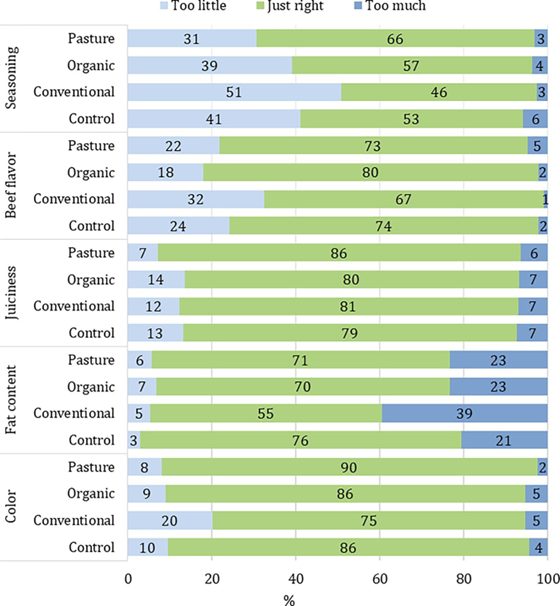How the hamburger is made: the surprising psychological effect of learning where your meat comes from
Relevant topics Research, Archive
More and more consumers are interested in ethically produced meat. This includes the place and ways animals are raised and cared for. Previous research has found that telling about the better living conditions or organic production of beef products made them more preferable and increased willingness to buy these products (Risius & Hamm, 2017). Could providing this information also influence how beef products taste? Let’s find out!
The Role of Information on Product Perception
Think back to the last time you had eaten something delicious. Would you like to eat that dish again? The reason most people would say ' yes' is because previous experiences create an expectation. Similarly, information available at purchase can create an expectation of a product. This in turn influences the way we perceive a product.
It has been found that if expectations are not met, an assimilation effect may occur. This effect implies that the gap between perception and expectation narrows down because consumers alter their perception of the product such as to minimize the differences between the expected and actual perceptions (Deliza & MacFie, 1996). So, if a product was expected to be more likable, it would also be perceived as more likable.
“Just About Right”
An experiment was conducted to test what effect providing information about the living conditions of the cattle has on the perceived taste of beef. People received a meal package to prepare hamburgers, accompanied by an information flyer on the conditions in which the cattle were raised. There were flyers for three different types of beef: cattle raised on pastures (Pasture), organically raised cattle (Organic), and cattle raised conventionally in group pens with minimum space (Conventional). There was also a control group that received no information flyer. The beef in all meal packages was pasture-raised. People were asked to rate different parts of their taste experience of the beef as “too little”, “too much” or “just about right”. The results of which can be found below.

The experiment shows that the different information flyers influenced different parts of the perceived taste experience. A higher percentage of people who received the Pasture flyer rated the Color, Fat content, and Seasoning as “just about right”, while a higher percentage of people who received the Organic flyer rated the Beef flavor as “ just about right”. In short, information about the living conditions of the cattle does influence the perceived taste of beef.
Key takeaways:
- The perceived taste of beef is based on a person’s expectations.
- Providing information about the living conditions of the cattle can influence someone's expectations of the flavor of the beef and thus influences the perceived taste of the beef.
- Retailers should consider providing more information on how ethical or sustainable a product is to increase the expectation, and to that extent, the perceived likeability of a product.
Further Reading
-
Beyond the Taste Buds: How Packaging Shapes Our Perception
If you're a food lover, chances are you've been lured by a mouth-watering package design at least once. But did you know that the shape and color of packaging can also affect your perception of taste? The days where the sole purpose of a product’s packaging was to protect its content are over. As visual creatures, we often base our purchase decisions on the visual appearance of products. That’s why packaging plays a key role in setting product-related expectations. Packaging design can communicate a product's quality, value, and taste, which can influence consumers' purchasing decisions.
But how exactly can packaging design influence our taste expectations of food and beverage products?


